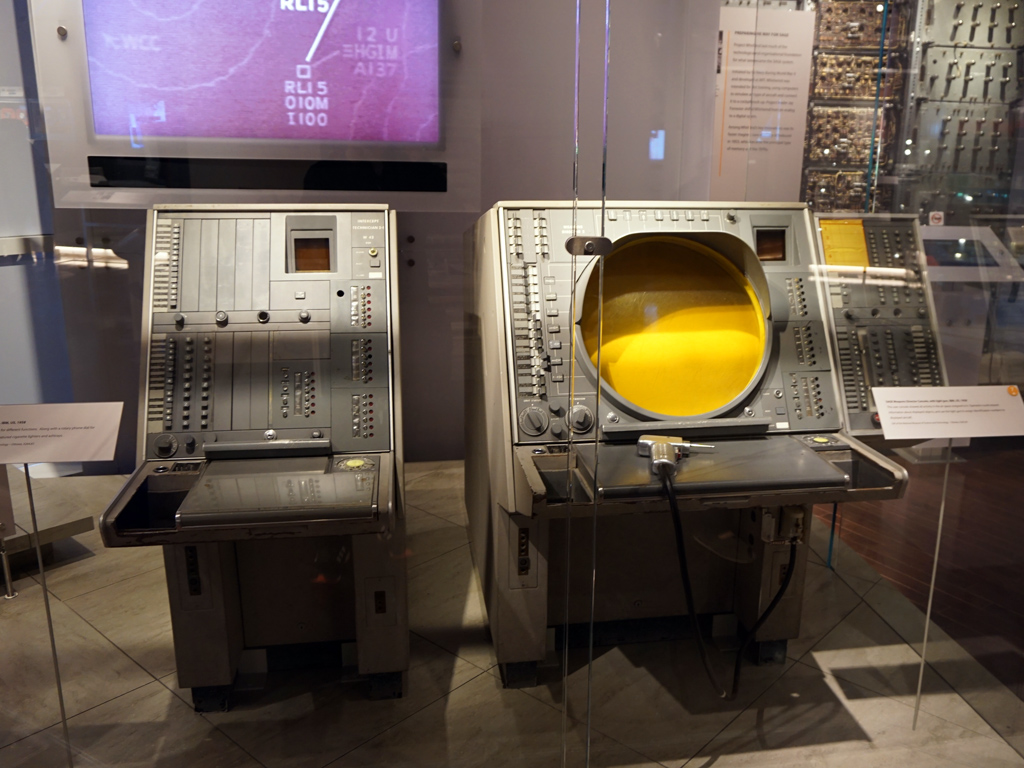Computer History: From The Antikythera Mechanism To The Modern Era
In this article, we shed light on the most important moments in computer history, acknowledging the people that have contributed to this evolution.
Semi-Automatic Ground Environment (SAGE)
The Semi-Automatic Ground Environment (SAGE) Air Defense System was initially devised in 1951 and fully deployed in 1963. To give you an idea of how large this project was, it cost more than the Manhattan Project, which produced the first nuclear weapons! The conception of the SAGE system was described by MIT professors George Valley and Jay Forrester in a technical memo released in 1953:
The system will consist of (1) a net of radars and other data sources and (2) digital computers that (a) receive the radar and other information to detect and track aircraft, (b) process the track data to form a complete air situation, and (c) guide weapons to destroy enemy aircraft.
SAGE was in constant operation from 1963 to 1983. For its time, the SAGE system was highly advanced and its concept and architecture is very close to modern air defense systems. The tracking data of the deployed radars was transmitted over telephone lines to the nearest direction center, where an AN/FSQ-7 computer processed the data. Afterwards, the direction center would send notifications and targeting data to the nearest air bases, or surface-to-air missile systems, which would be able to intercept the incoming threats.
Since SAGE was functional during the cold war period, the most likely threats were bomber airplanes armed with nukes. In other words, the SAGE was a huge network of radars and computers that processed all incoming data and assigned targets and priorities, providing great coverage of the airspace along with fast responses to possible threats. We should note that even military aircraft of this period (all except the F-104 Starfighter) carried SAGE data link equipment, so they were able to transmit information to the system in real time, during the interception or the recognition of the threat.


In full deployment, the SAGE included hundreds of radars and had 23 direction centers (with one of them located in Canada) and three combat centers, which were spread throughout the entire U.S. All direction centers were connected to missile batteries and airbases. Each one of the SAGE direction centers housed an enormous AN/FSQ-7 computer (the largest ever built), which needed over 100 people to operate, used 60,000 vacuum tubes, consumed 3 Megawatts of power and weighed 250 tons!
The command centers were equipped with AN/FSQ-8 computers. In order to ensure continuous operation, each computer consisted of two systems, with one of them taking over the load when the other was not working or in maintenance. This allowed for a very low down-time, which is of crucial importance to a military/defense system. According to statistical reports, the amount of time that both systems were down simultaneously was less than four hours per year. Given the huge amount of tubes that these computers used, this is a really low down-time!
Another significant contribution of the SAGE system was the birth of the computer software design. Such a huge system demanded sophisticated software so programming would be more efficient in order to allow for optimal results. Many programming techniques were created during the SAGE software development, which was a huge project that involved several hundred programmers. And the most difficult part was that all coding had to be done in pure machine code, since high-level languages had not been invented when the SAGE system was in its conception and implementation phases.
Get Tom's Hardware's best news and in-depth reviews, straight to your inbox.
MORE: Best Power Supplies
MORE: Power Supplies 101
Current page: Semi-Automatic Ground Environment (SAGE)
Prev Page Big Blue Makes Its Entry In The Computer Market Next Page TX-0, DEC PDP-1, The Hacking Ethic And Other DEC Computers
Aris Mpitziopoulos is a contributing editor at Tom's Hardware, covering PSUs.